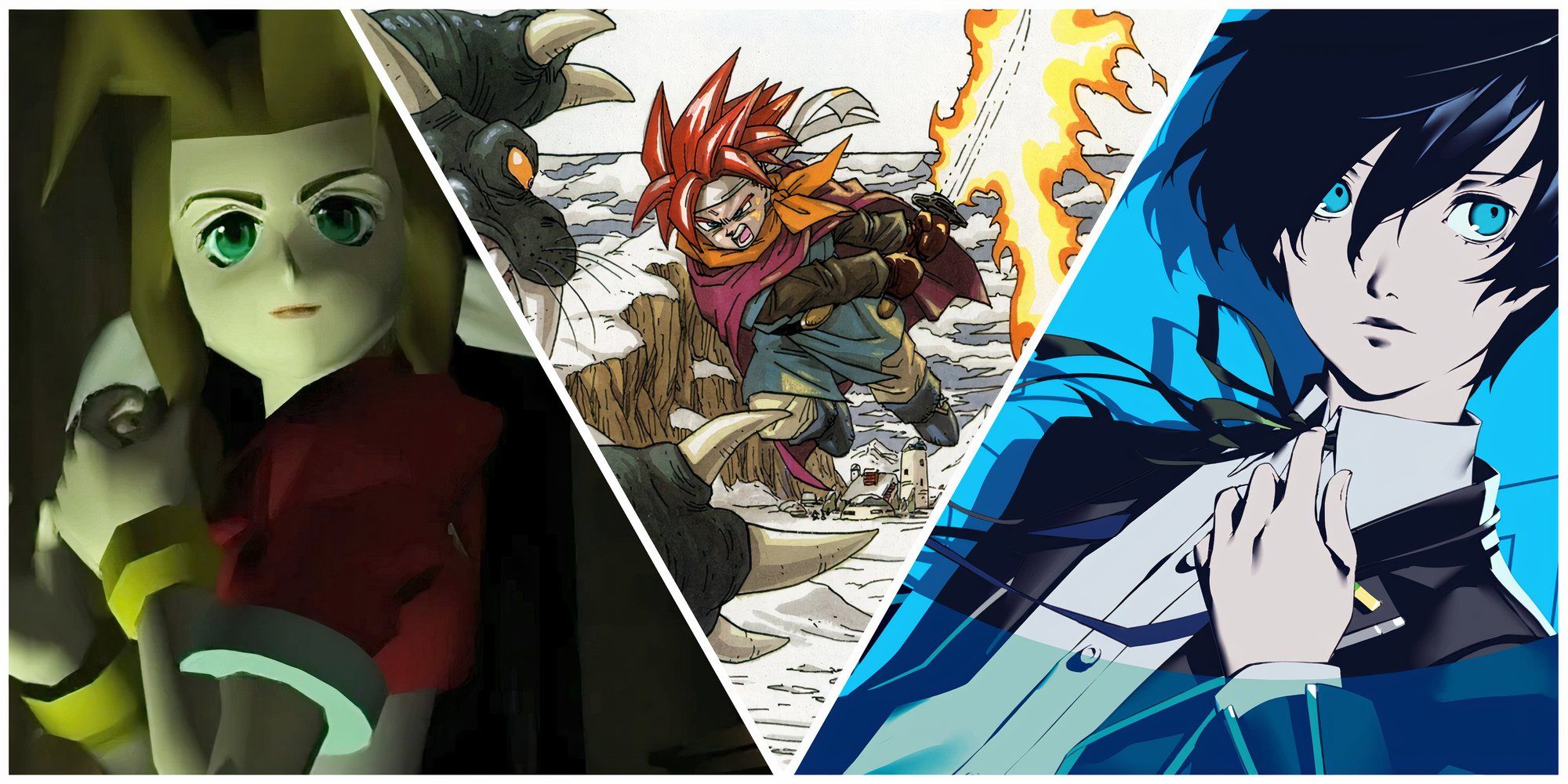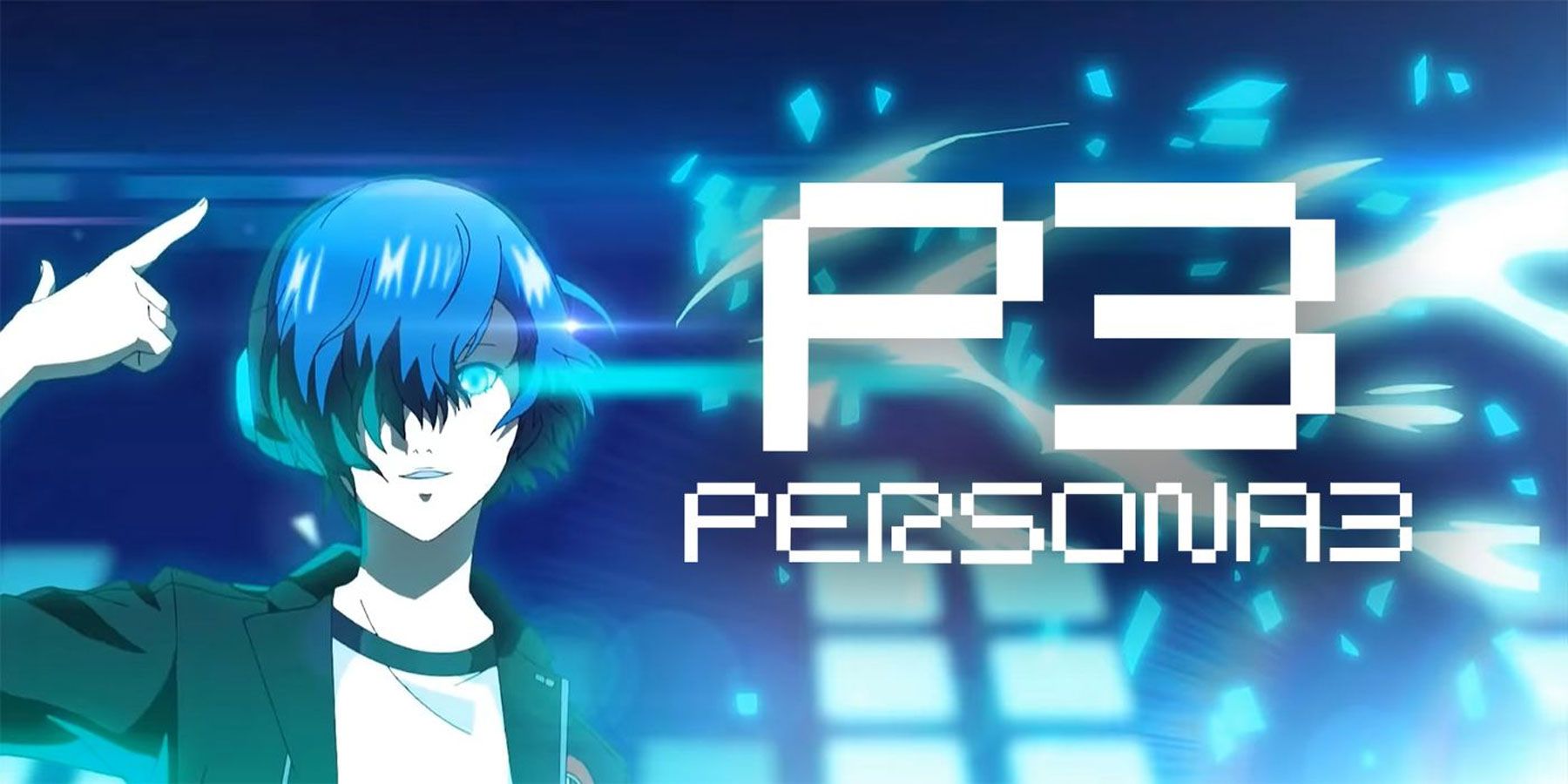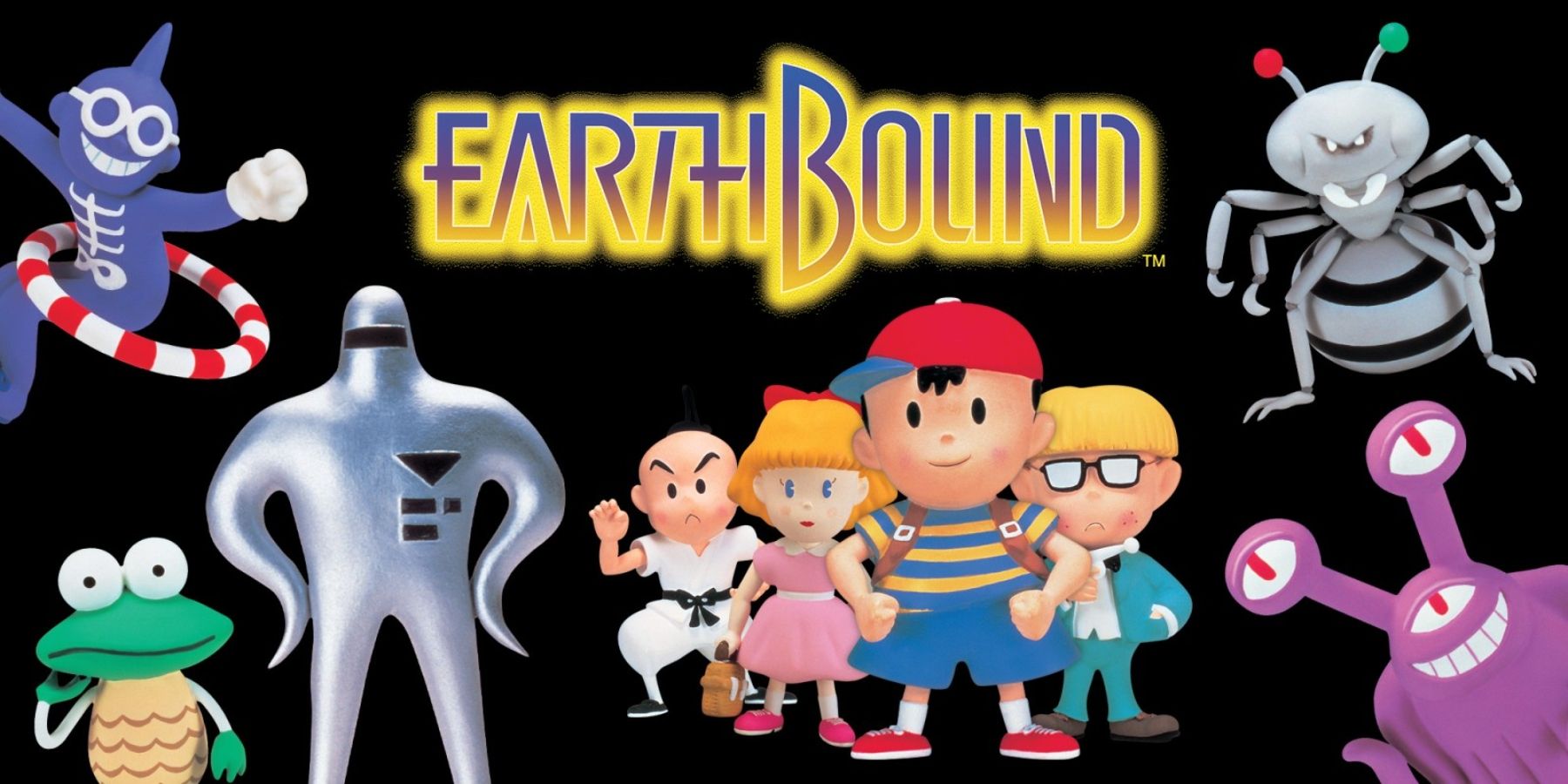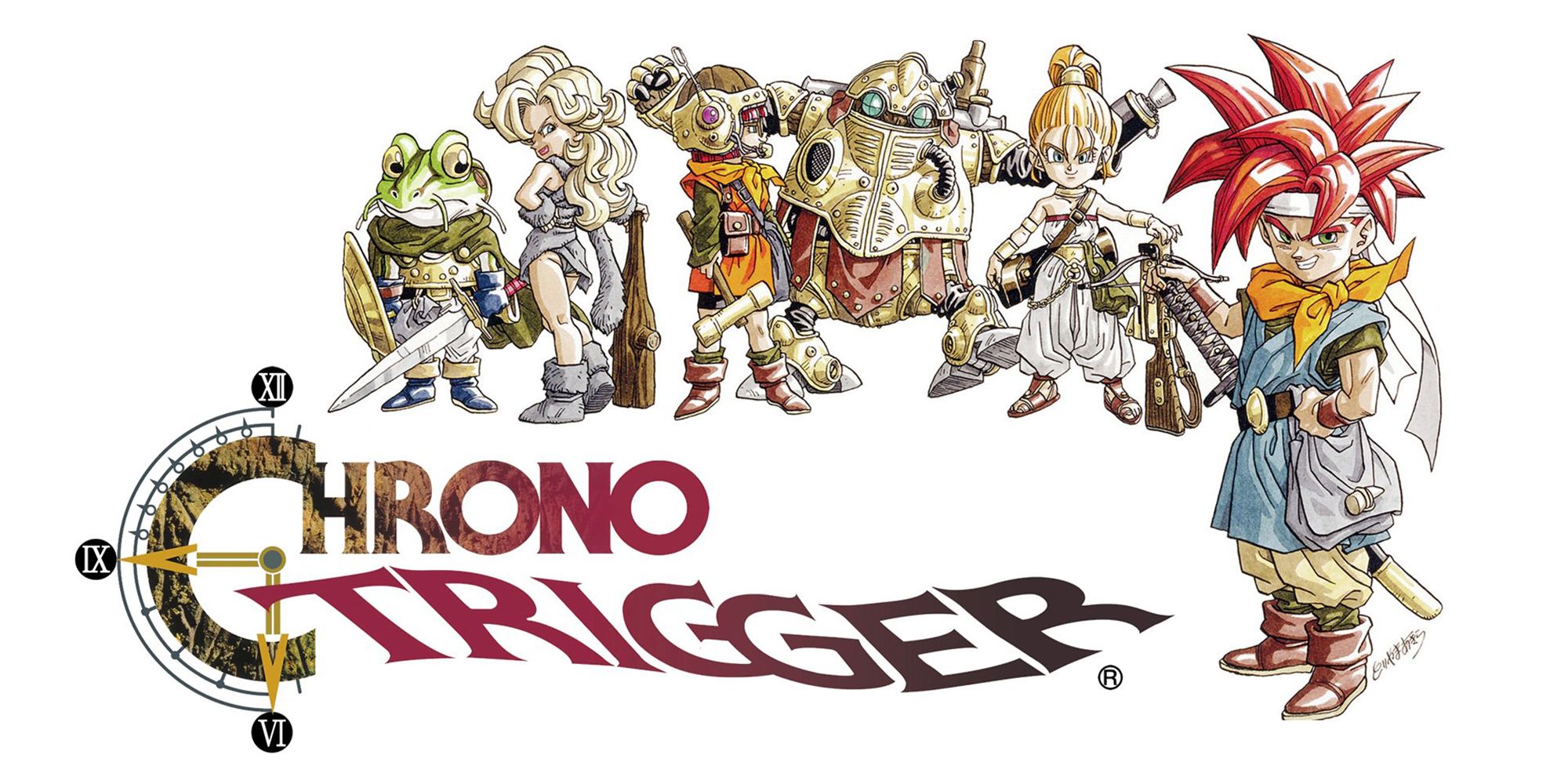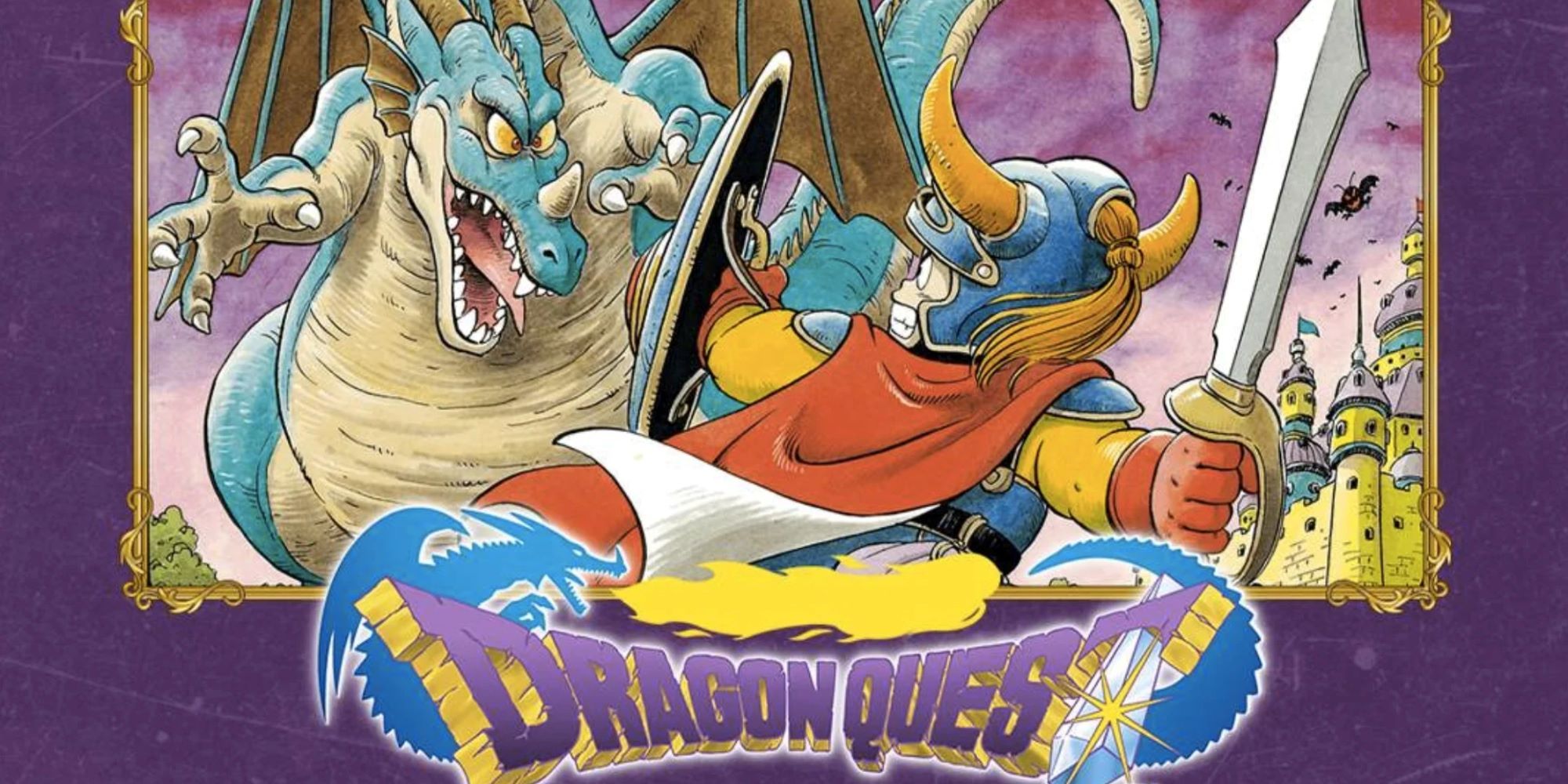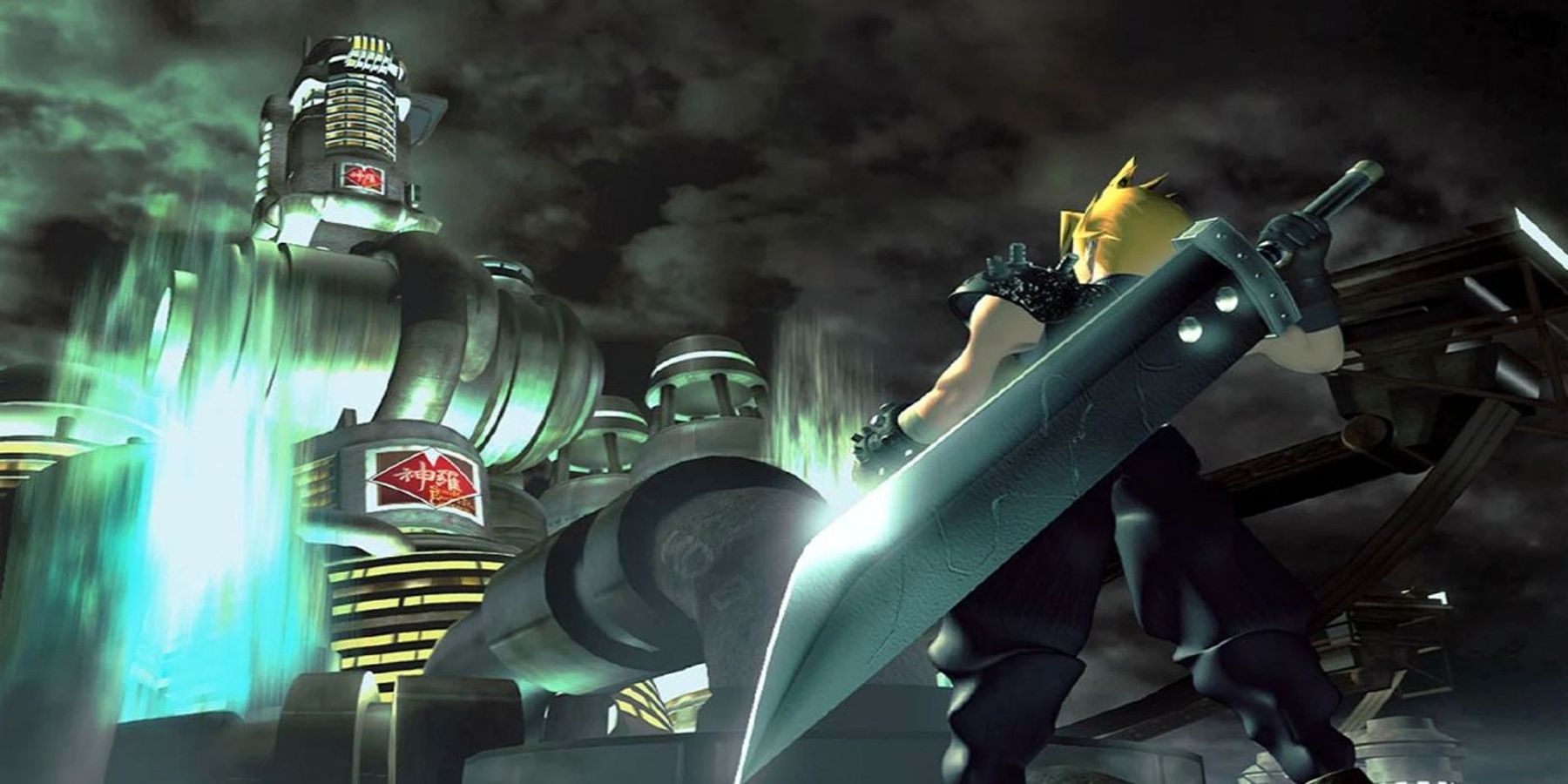Highlights
- Persona 3 introduced complex character interaction and life simulation in JRPGs, bringing these games to a global audience.
- EarthBound broke genre norms with humor and an unconventional setting, influencing RPGs globally, especially in the indie scene.
- Chrono Trigger, with its legendary creators, introduced RPG staples like "new game plus" and non-linear gameplay, influencing modern games.
If historians were to look back and tell a complete story of video games, they would no doubt point to the arrival of computer roleplaying games as a tectonic shift in the timeline. Before the advent of RPGs, video games were exclusively considered toys or novelties. However, with the introduction of statistical complexity, deeper non-playable character interaction, and highly realized simulated worlds, they became windows into other worlds, and Japanese developers had a huge part in driving the innovations that made that possible.
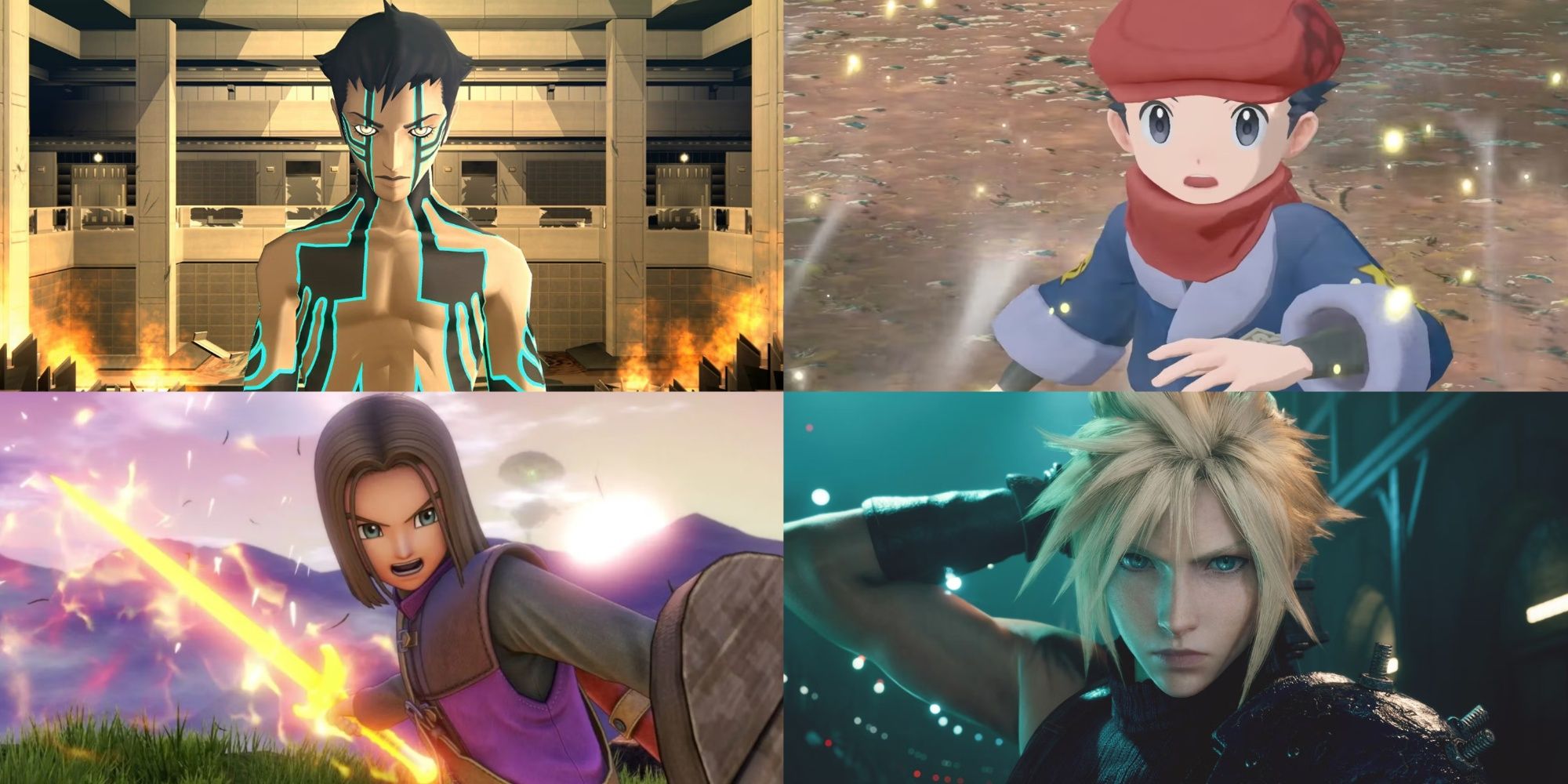
10 JRPG Franchises With The Most Games
It's no secret that the most popular JRPG franchises put out a lot of games but some of these take it to another level.
Most early JRPGs primarily used turn-based systems to determine battle outcomes. Computing power has since allowed developers to simulate more lifelike physics as a basis for battle sequences. However, given the fanfare that turn-based games have had over the last few years, it seems that, rather than representing a technological shortcoming or gap-fill, the format has an appeal all of its own, meaning that these games were not only culturally influential but are still highly playable today.
6 Persona 3
Telling More Personable Stories
- Persona catapulted the Shin Megami Tensei series and other JRPG staples into mainstream Western consumption
- The third entry introduced more complex character interaction via "social links" and popularized life simulation in the genre
With all due credit to the Shin Megami Tensei series (from which Persona emerged as a spin-off title), the Persona series was instrumental in shaping an interest in RPGs with slice-of-life activities and relatable stories for high school-aged young adults. The first in the series, Revelations: Persona, began as an attempt to bridge the gap between Shin Megami Tensei titles and more casual console audiences. This gamble paid off, and it became an overnight hit.
Persona 3 took the series to a new level by breaking into Western markets, bringing the Megami Tensei franchise to global attention. The modern setting and focus on psychological and occult elements are told through a nuanced and highly persona(lized) character-based narrative, appealing to adults and high-school-going young adults of any background. The series succeeded in bringing the more grounded, personal stories usually found in visual novels to interactive roleplaying games, thanks to a focus on social/life simulation and "social links."
5 EarthBound
Breaking Conventions In A More Grounded Setting
Earthbound
- Platform(s)
- SNES , Nintendo Game Boy Advance
- Released
- June 5, 1995
- Developer(s)
- HAL Laboratory , Ape Inc.
- Genre(s)
- RPG
- EarthBound broke many genre norms with self-aware humor and its unconventional setting and characters
- Although it was not an international success, its influence can be felt in countless RPGs, especially in the indie scene
During the development of the JRPG genre, many studios played safe and continued to output "fighting fantasy" worlds and scenarios. While there are examples of JRPGs taking place in unusual or modern settings, EarthBound shook players' expectations of what an RPG could be with a stellar script, memorably unusual game mechanics, and a bright, well-realized modern lampooning of contemporary American life (at least one as seen from a Japanese perspective). Although Earthbound was confined mainly to Japan, it developed a devout cult following overseas.
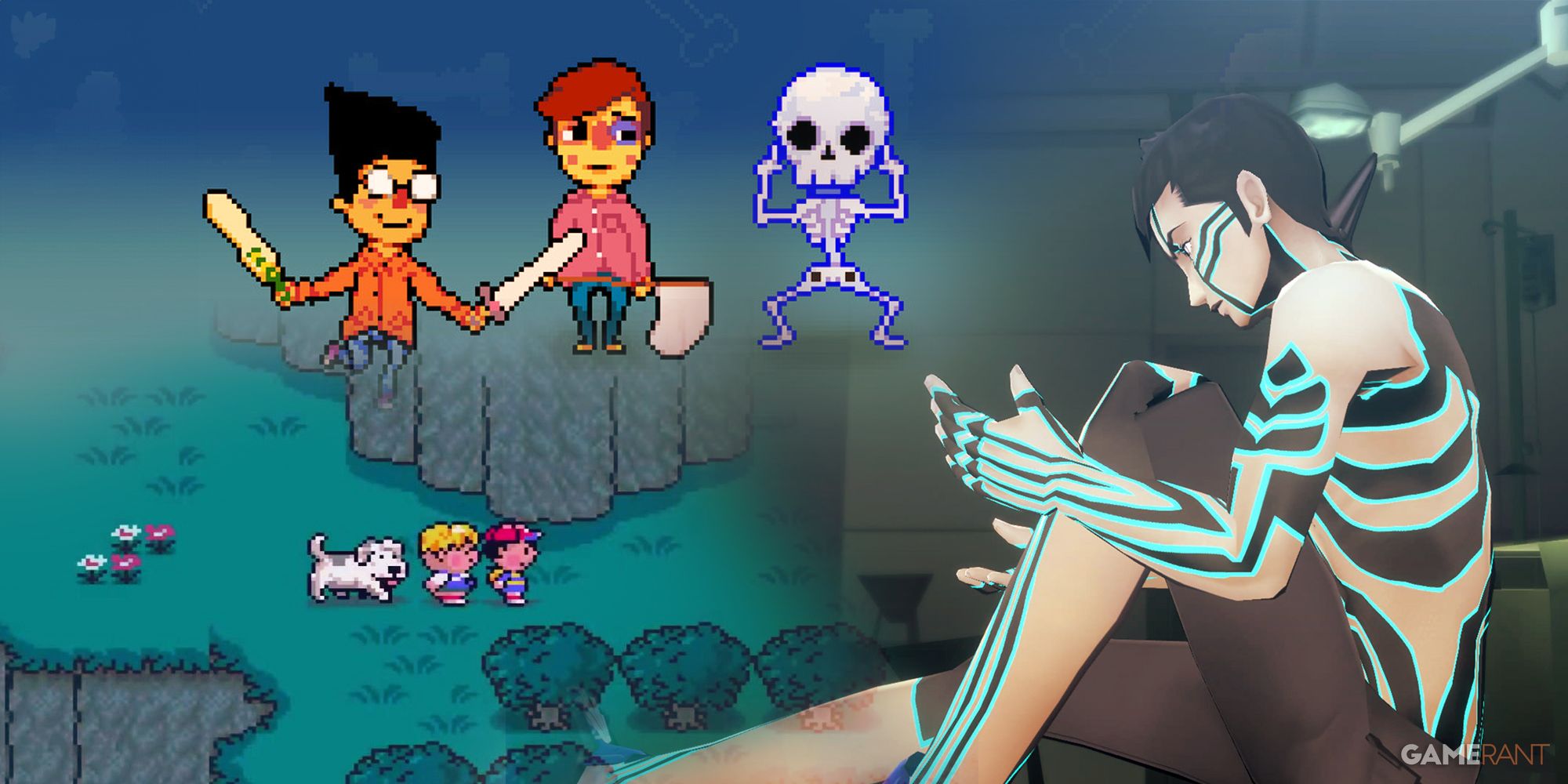
6 Best Games To Play If You Love Undertale
Undertale may be one-of-a-kind, but there have been game studios before and since that set out to capture the same kind of offbeat magic.
For a game about a couple of kids getting up to no good, presented with what many North American critics called "childish visuals," EarthBound brought self-aware maturity to the genre along with an often absurd, tongue-in-cheek sense of humor. Its frankness, willingness to bend conventional rules, and ability to use the medium of video games in a capacity rarely seen before had a profound influence, notably on Japanese audiences but also on video game studios across the world, especially in the indie scene.
4 Chrono Trigger
A Timeless Classic
Chrono Trigger
- Platform(s)
- SNES , PlayStation (Original) , PC , Nintendo DS , Android , iOS
- Released
- March 11, 1995
- Developer(s)
- Square Enix
- Genre(s)
- RPG
- This game is widely considered to be one of the greatest JRPGs ever made, thanks to the input of its legendary creators
- Chrono Trigger took many risks but introduced RPG tropes that are now staples in modern games, such as the "new game plus"
Considered by many to be the pinnacle Japanese roleplaying game, Chrono Trigger was shaped in part by the combined experience of Yuji Horii and Hironobu Sakaguchi, the creators of Dragon Quest and Final Fantasy, respectively. Chrono Trigger was a burst of innovation in the JRPG scene. For example, rather than cut away to a battle sequence, fights would take place in the main environments, and freedom of movement left room for a wider scope of tactics.
While many Western RPGs experimented with non-linear gameplay, most JRPGs put players on a defined path, regardless of whether they featured an open-world map. Chrono Trigger shook things up by offering branching narrative paths and multiple endings depending on the player's actions. Chrono Trigger also popularized the "new game plus," a feature that is practically standard in most JRPGs (and many non-JRPGs) today.
3 Dragon Quest
The Progenitor Of The Modern JRPG
Dragon Quest (1986)
- Platform(s)
- Nintendo Entertainment System , MSX , SNES , Game Boy Color , Mobile , Wii , Android , iOS , Nintendo 3DS , PS4 , Nintendo Switch
- Released
- May 27, 1986
- Developer(s)
- Chunsoft
- Genre(s)
- JRPG
- Thanks to its more forgiving difficulty and user-friendly visuals, the original Dragon Quest is largely responsible for making roleplaying games popular in Japan
- Its influence can be felt in just about every JRPG made, as it introduced a large number of RPG conventions
The earliest Western RPGs were attempts at using computers to simulate worlds seen in tabletop games such as Dungeons & Dragons. This hot dice-driven tabletop trend did not catch on in Japan during the 80s, but the early computer RPGs that developed following its emulation in expensive university computers did. Inspired by games like Ultima and Wizardry, the developers at Enix produced Dragon Quest, marketed as Dragon Warrior in North America. Unlike its inspirations, Dragon Quest aspired to be user-friendly, less punishing, technically streamlined, and appealing to newcomers.
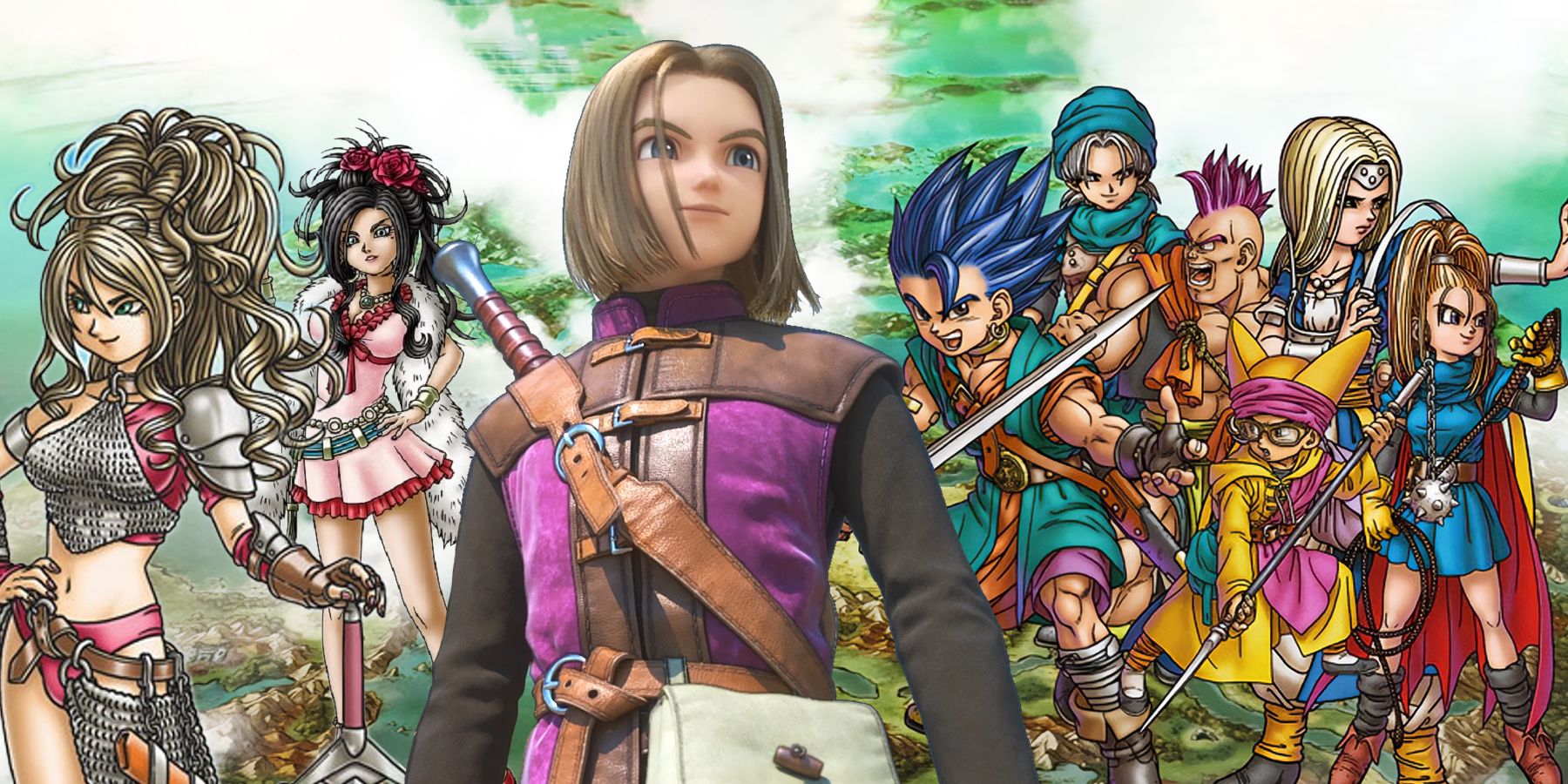
Every Mainline Dragon Quest Game, Ranked
There have been many mainline titles in the Dragon Quest series throughout the years though some stand out above the rest.
The series has remained rooted in this philosophy ever since, with each entry's world bursting with rich personalities brought to life by the artistry of the late great Akira Toriyama. It is widely considered one of the great forerunners of the JRPG genre, and its DNA can be felt encoded in just about every Japanese-made roleplaying game since. In terms of influence in Japan, the Dragon Quest series would take the top spot, but it was only until the eighth installation that the series gained fame in the rest of the world.
2 Final Fantasy 7
Breaking The Limit And Into Overseas Markets
Final Fantasy 7
- Platform(s)
- PlayStation (Original) , PC , iOS , Android , Nintendo Switch , Xbox One , PS4
- Released
- January 31, 1997
- Developer(s)
- Square Enix
- Genre(s)
- RPG
- While other games in the series are influential in their own right, Final Fantasy 7 broke the dam and flooded the world with FF mania
- FF7 is considered a giant leap in advancing mature storytelling and is one of the great pioneers in early 3D visuals
Over its long and illustrious reign, the Final Fantasy series has set many trends and put a flame in the hearts of gamers worldwide. Many contenders from the series could take the spot; Final Fantasy 4 brought a level of sophistication to storytelling that had been previously unseen, and Final Fantasy 6 elevated the bar for narrative complexity even further. However, in terms of influence both overseas and in Japan, none can match the gravity of Final Fantasy 7, which spawned an anthology series of its own and whose characters have become recognizable even to non-gamers.
With one foot in fantasy and another in cyberpunk dystopia, Final Fantasy 7 pioneered 3D graphical capabilities in an emerging artistic space. It injected politics, philosophy, ecology, psychology, and nuanced storytelling into mainstream video game discourse and birthed some of the most iconic characters in fiction, period. The series and story have continued to evolve since its release in 1997, thanks to the Remake trilogy. As of Final Fantasy 16, the series has since turned away from the turn-based format, but it may still make a return someday.
1 Pokemon Red & Blue
An International Pokemon Phenomenon Out Of The Red & Blue
Pokemon Red and Blue
- Platform(s)
- Nintendo Game Boy
- Released
- September 28, 1998
- Developer(s)
- Game Freak
- Genre(s)
- JRPG
- Due to the explosive popularity of Red & Blue, it would be difficult to find anyone on planet Earth who doesn't recognize at least one Pokemon
- Pokemon was equally appealing to both Western and Eastern audiences and spawned a billion-dollar franchise
When GameFreak pitched their idea for a monster collecting game to Nintendo, the suits weren't exactly sure what to make of it all. After taking a risk and publishing the game anyway, Pokemon Red & Blue (Red & Green in Japan) became the flash point for one of the most culturally significant and profitable properties on the planet, spawning TV shows, movies, countless spin-offs, card games, and not to mention a billion-dollar merchandising bonanza, gaining fame (and, in some cases, infamy) across both the Eastern and Western hemispheres.
Rather than fighting with swords or magic, players take control of trainers who would throw collectible monster characters into the ring. The turn-based battles are, on the face of it, simplistic and easy to pick up, but there is just enough room for nuance, especially when playing against other players. This, plus the gentle difficulty curve, the social aspect of training and trading, and the portable capacity of the Game Boy, made Pokemon a cultural touchstone that still captivates players of all ages.
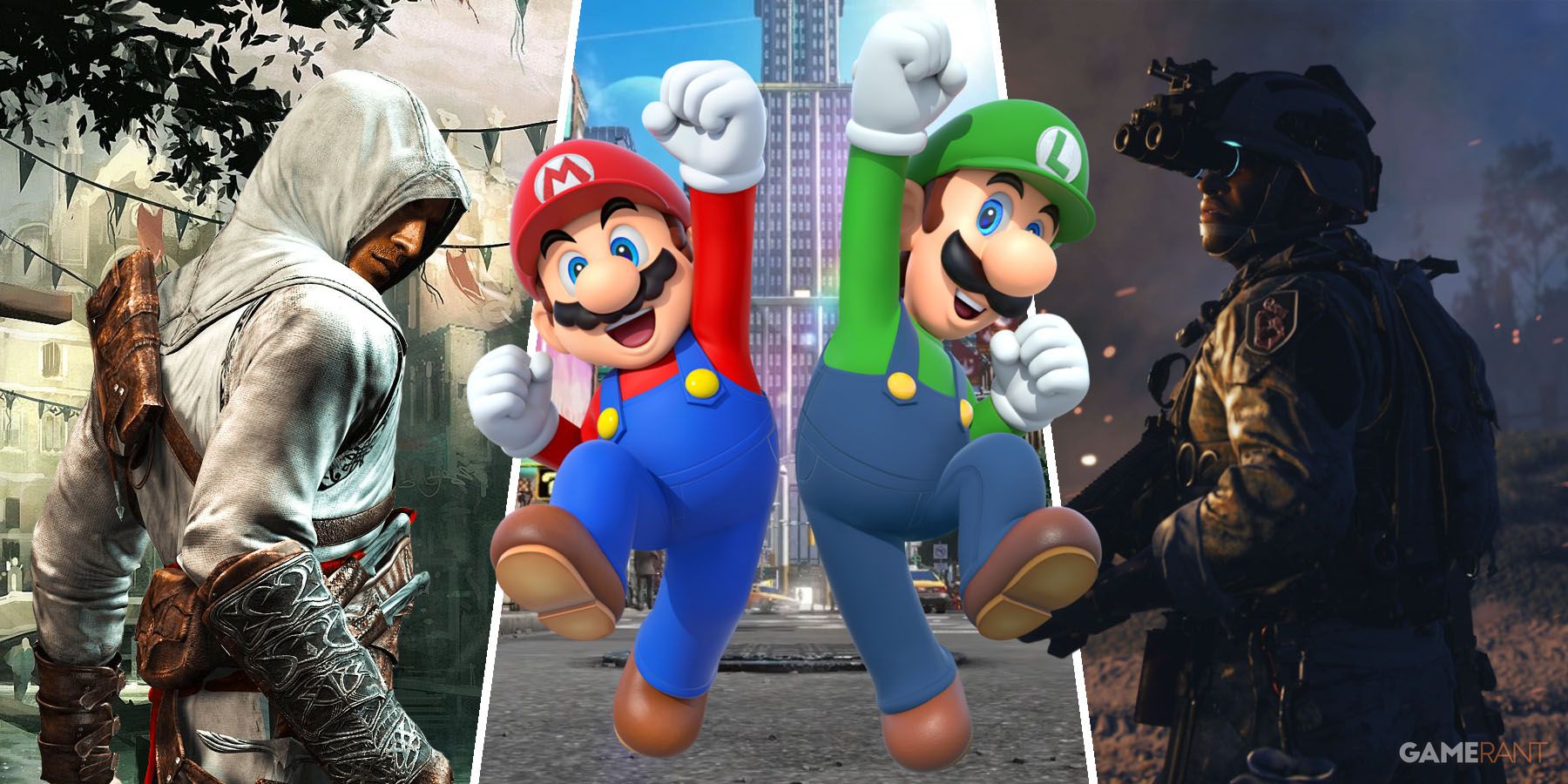
The 10 Best-Selling Video Game Franchises of All Time, Ranked
The best-selling video game franchises have sold hundreds of millions of copies over the years; generating billions of dollars in the process.

